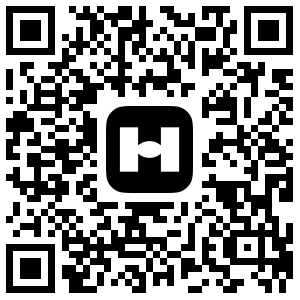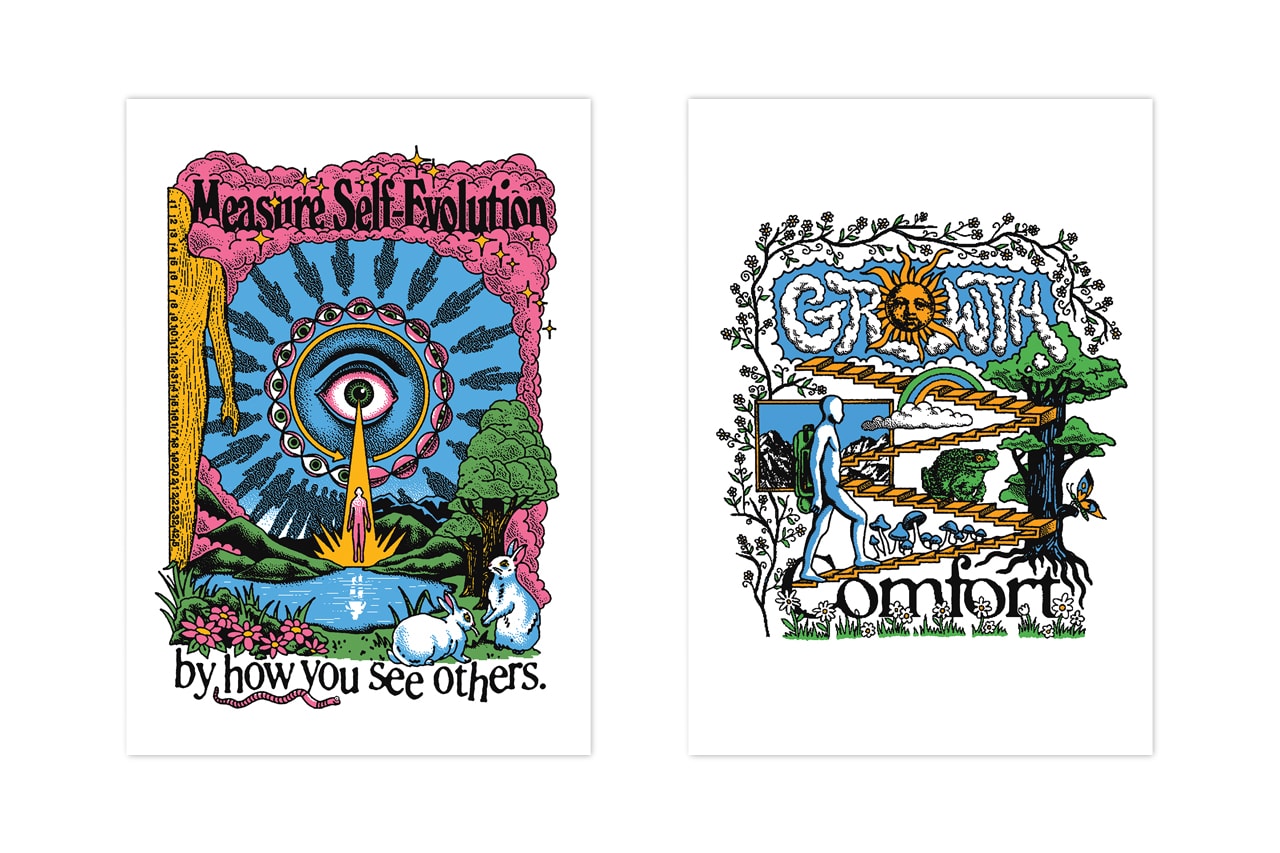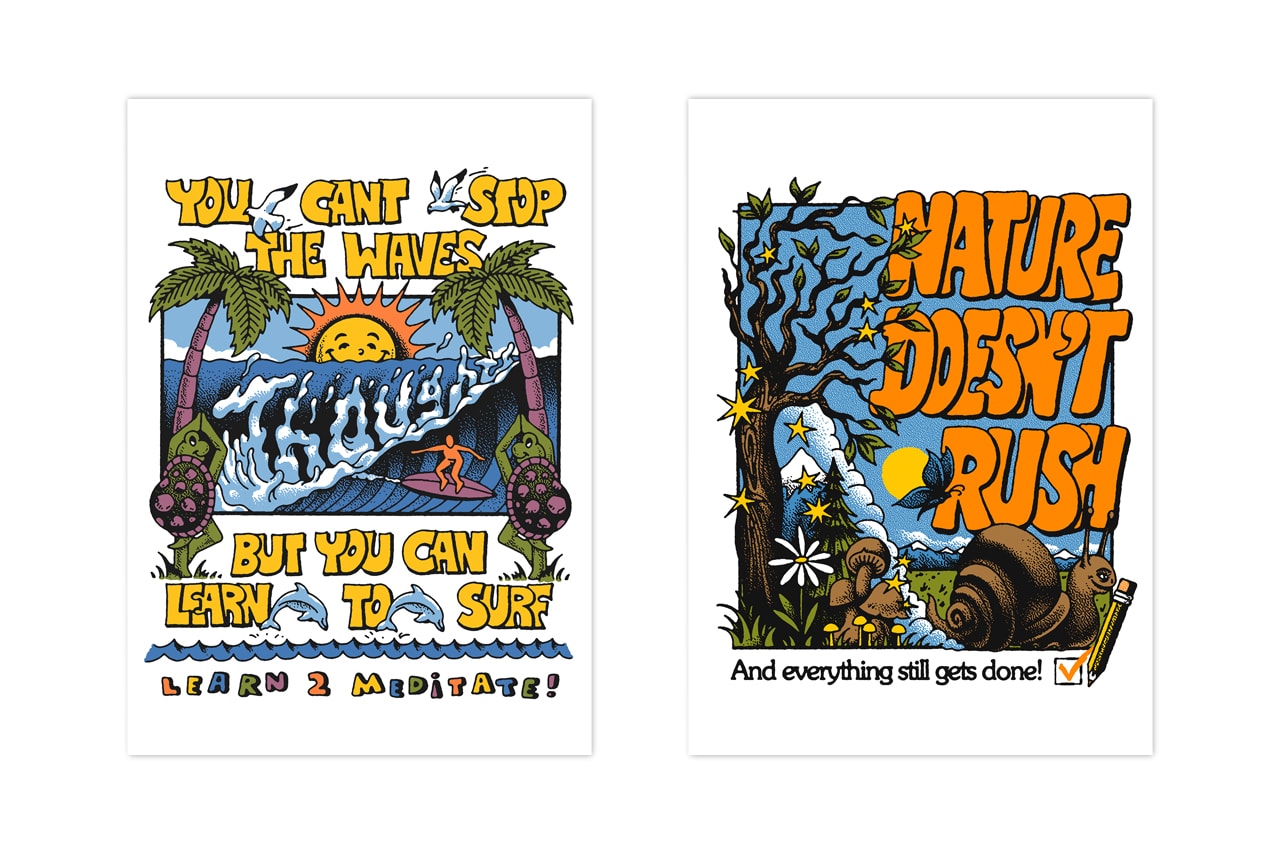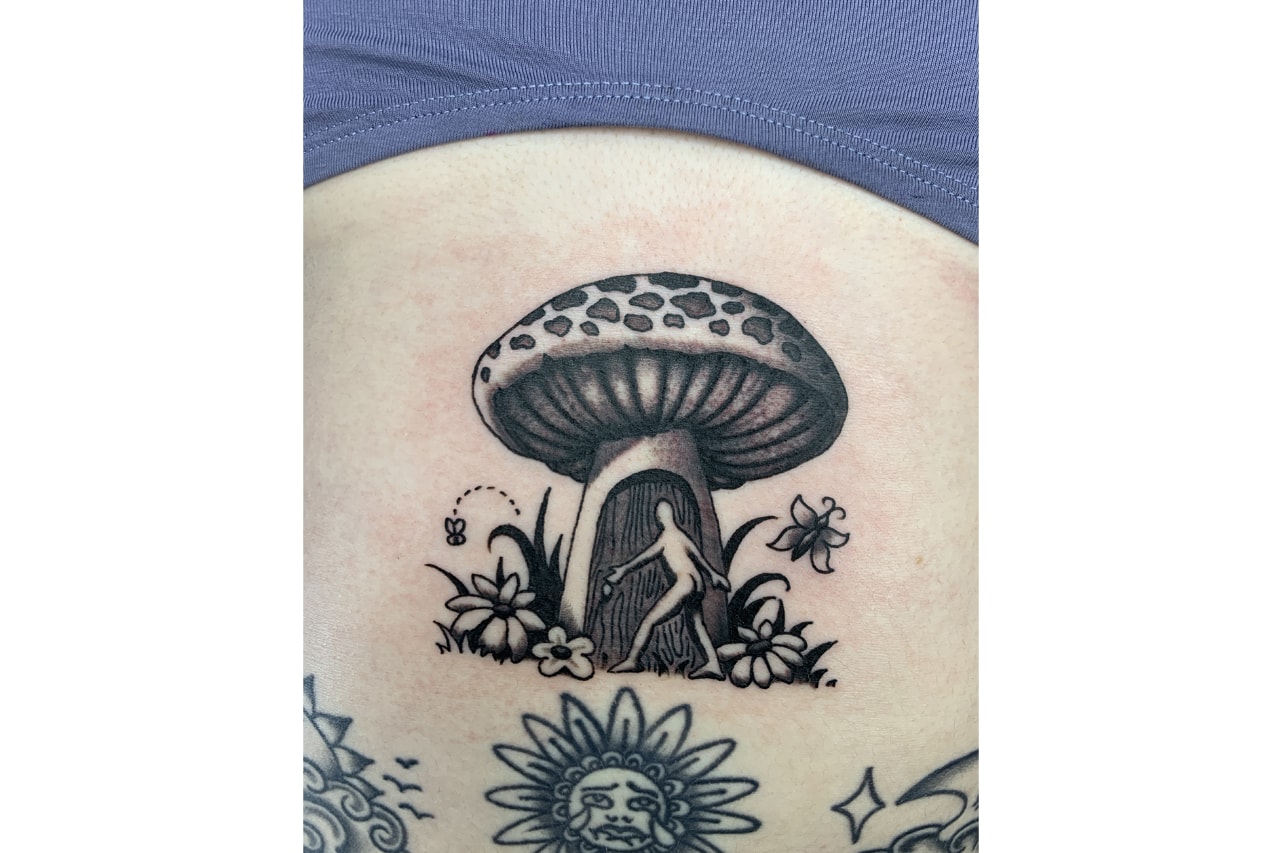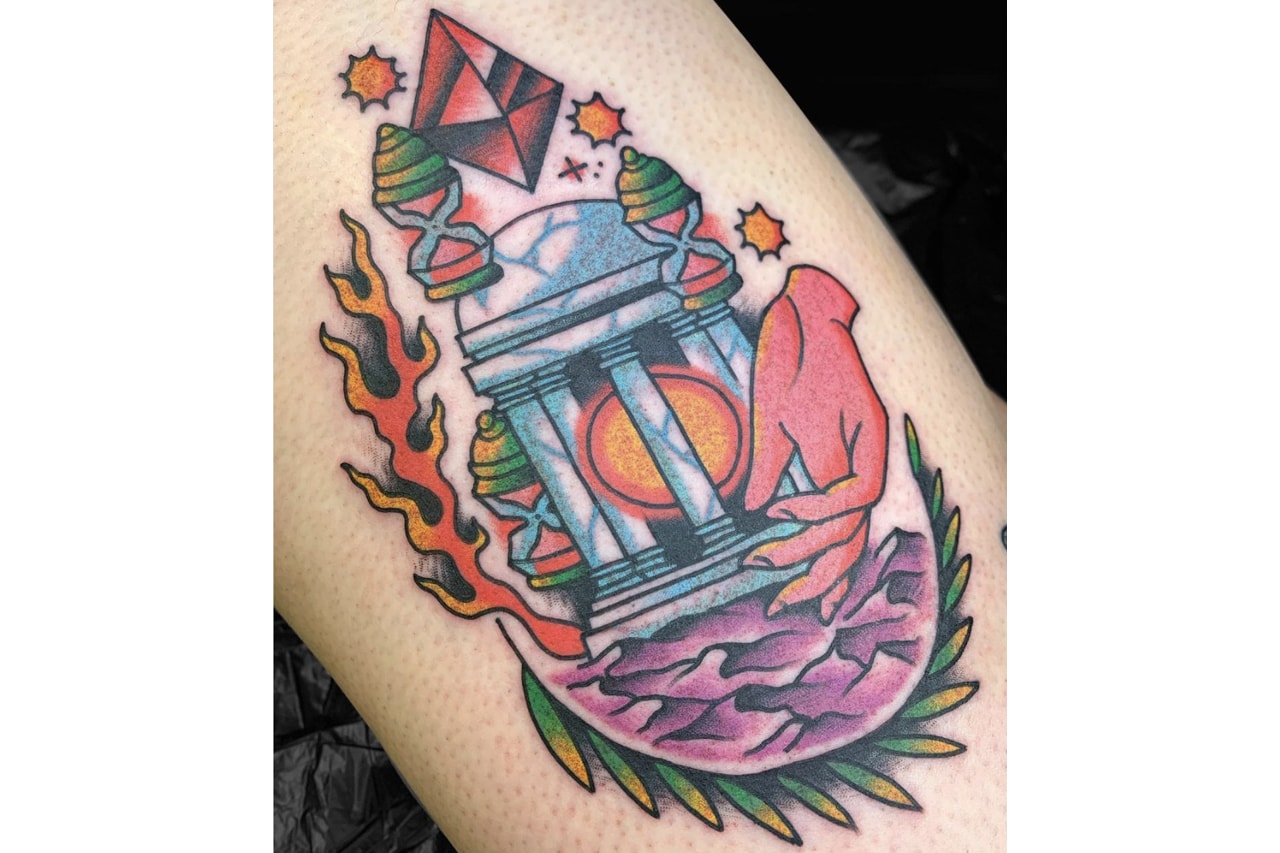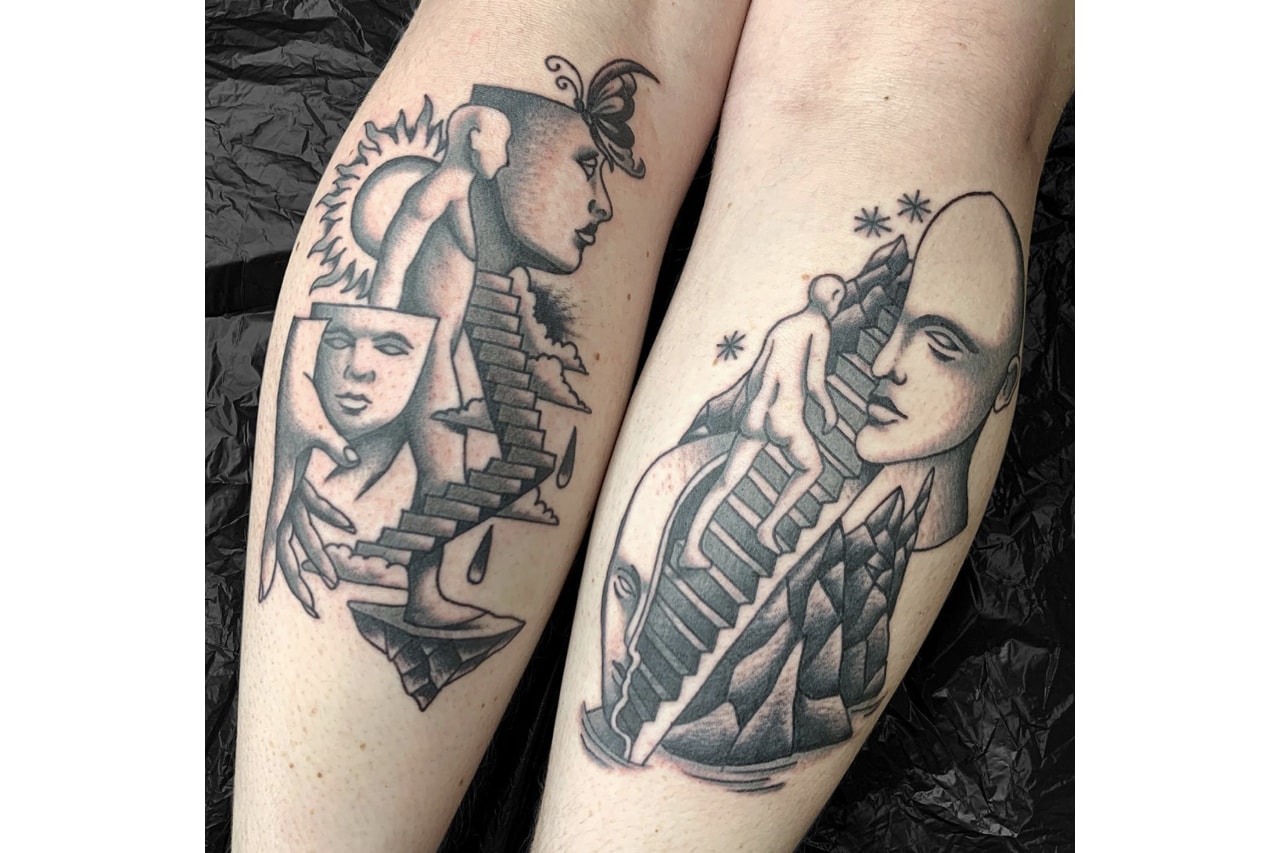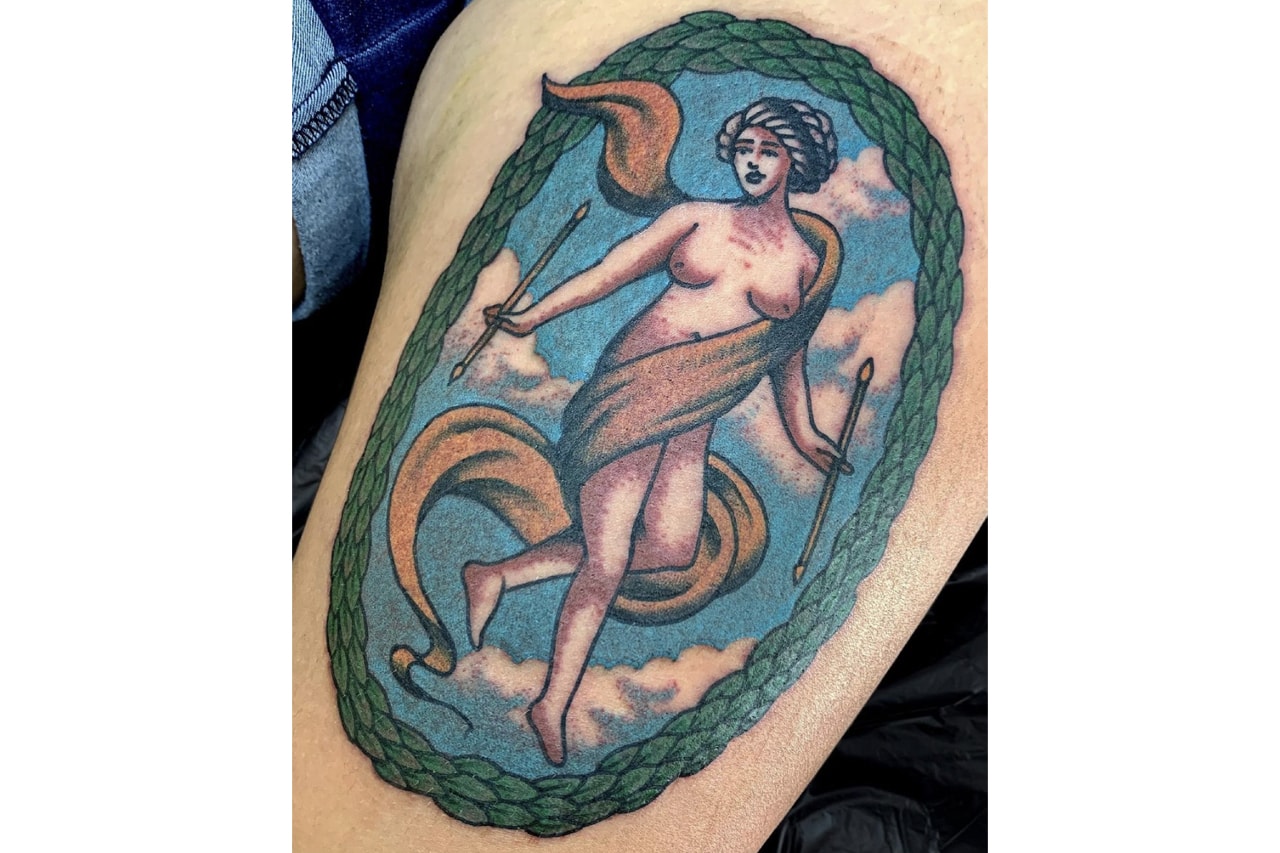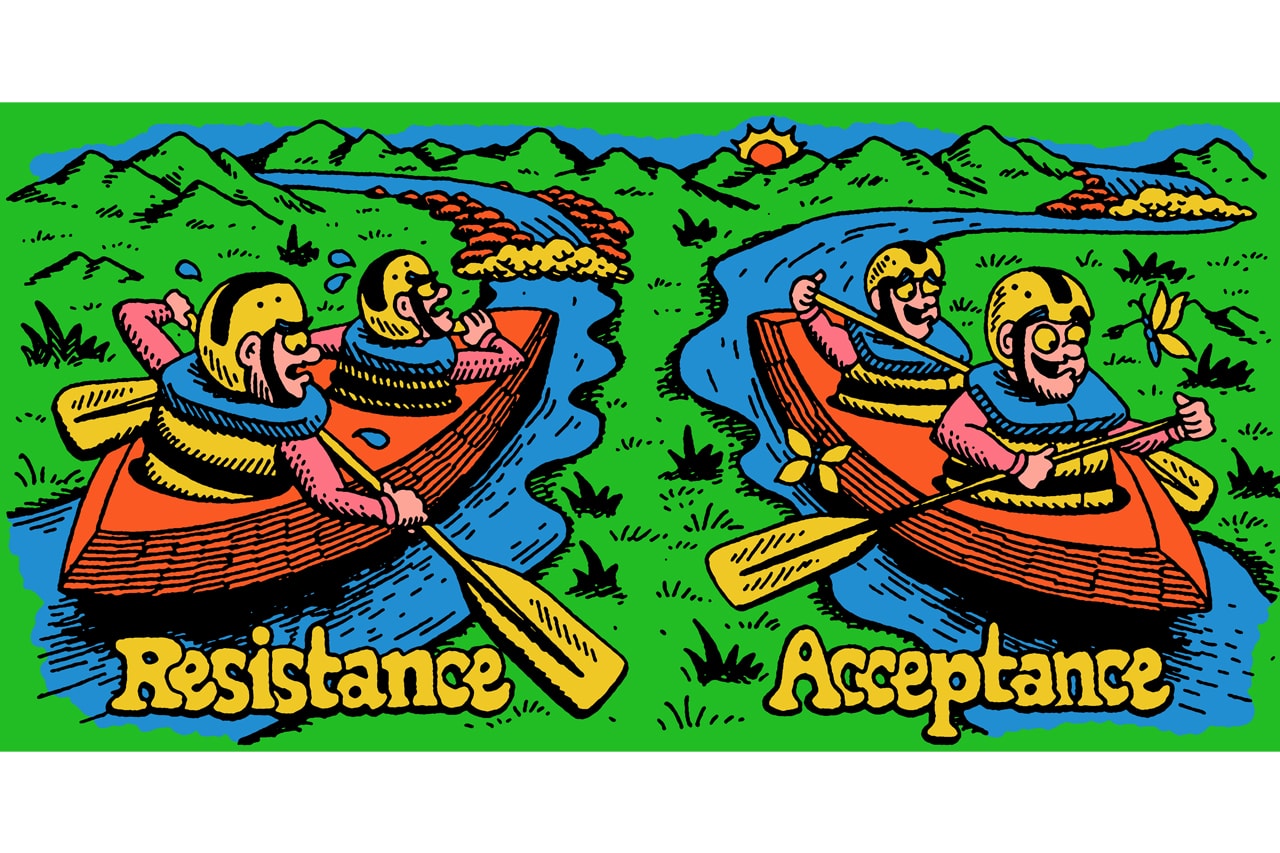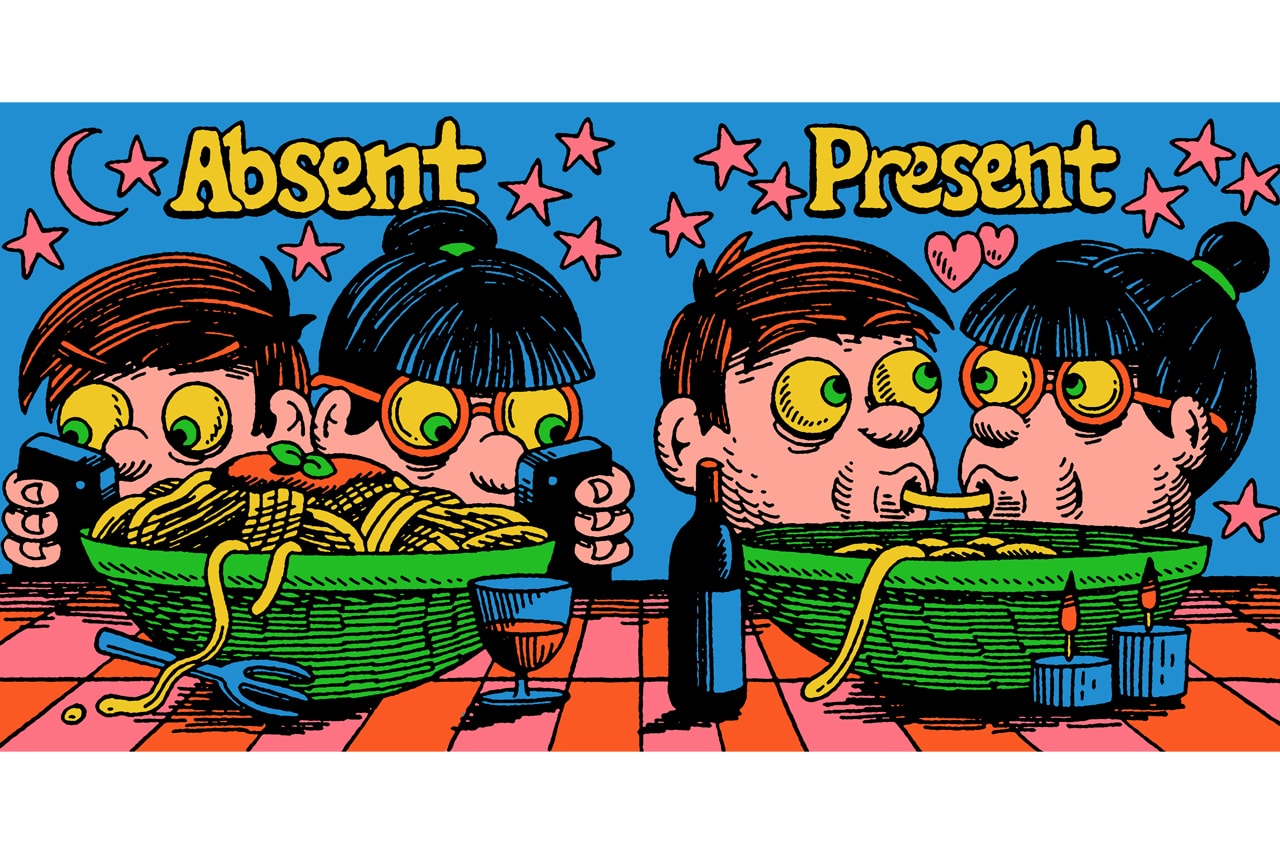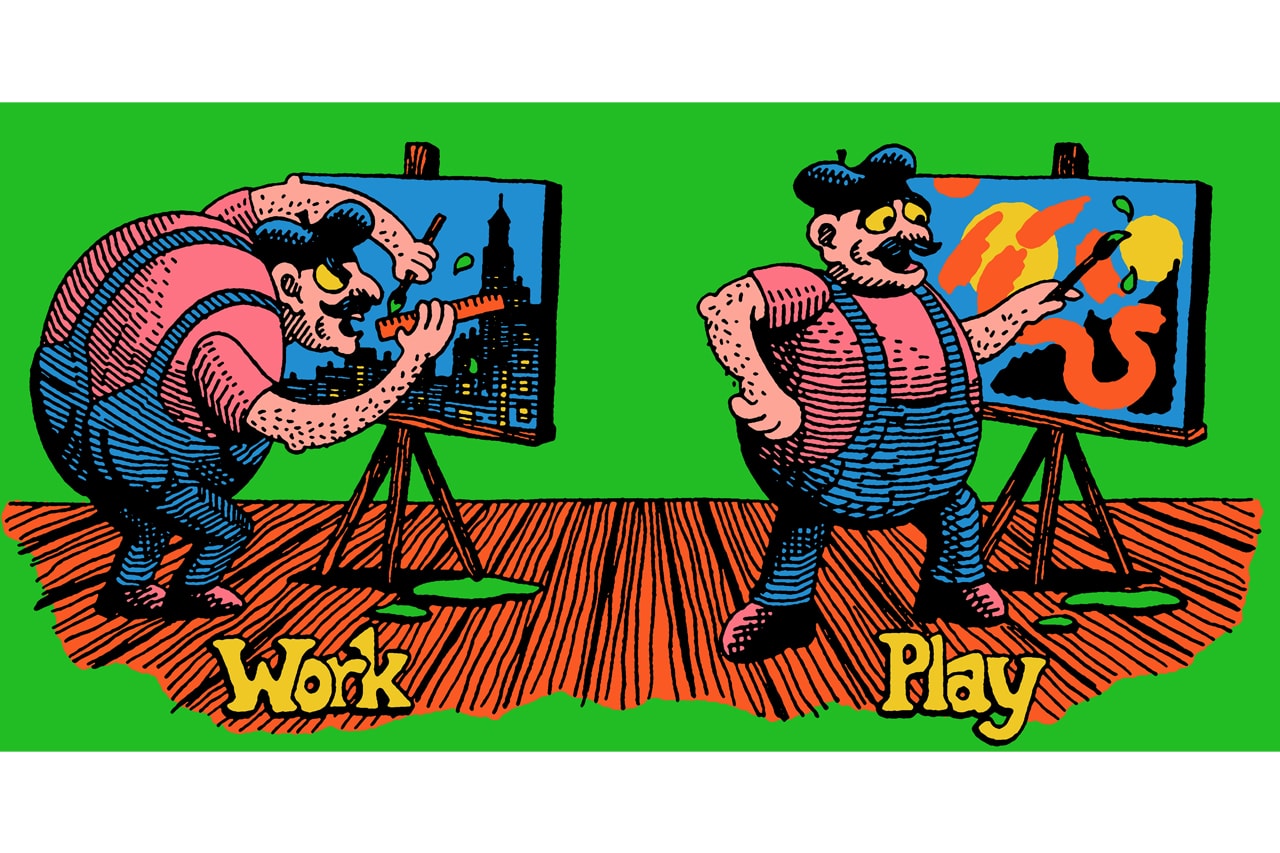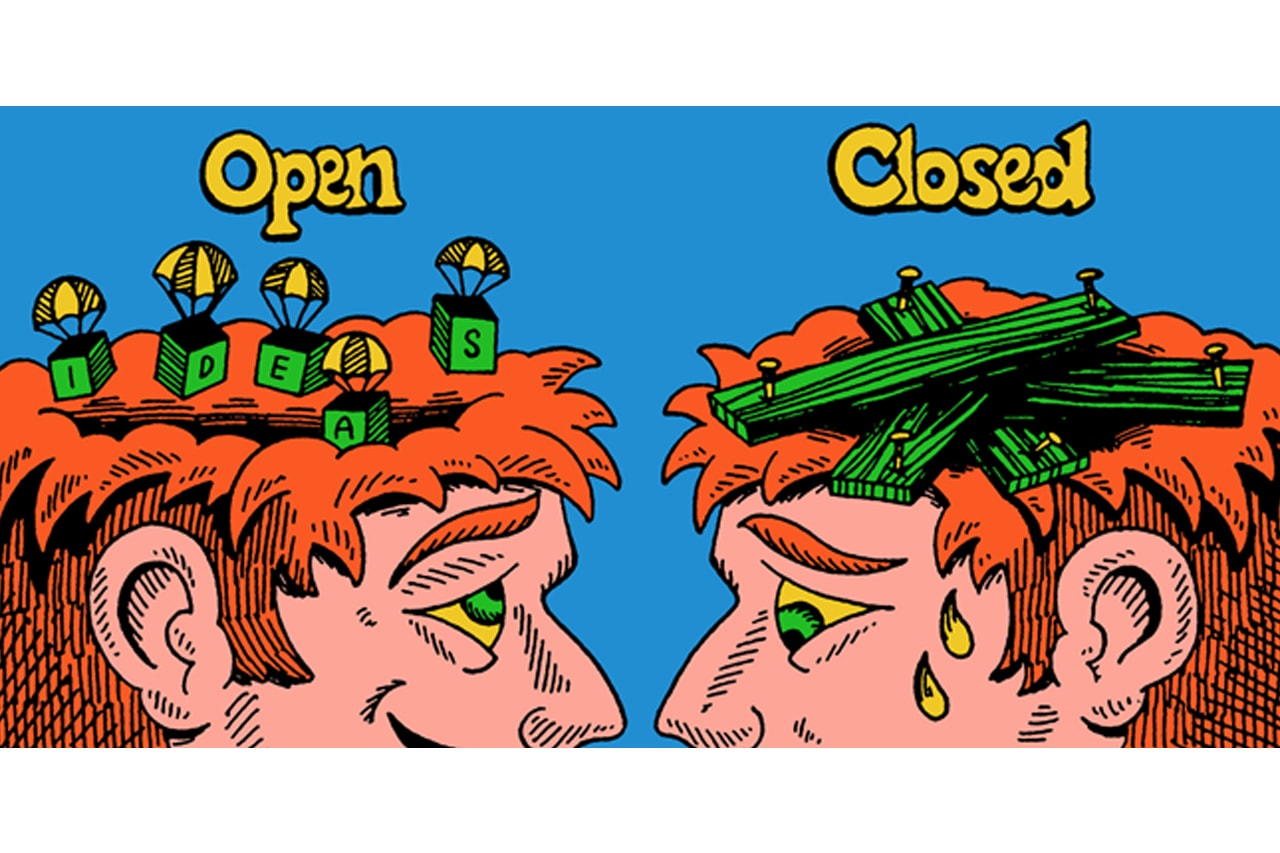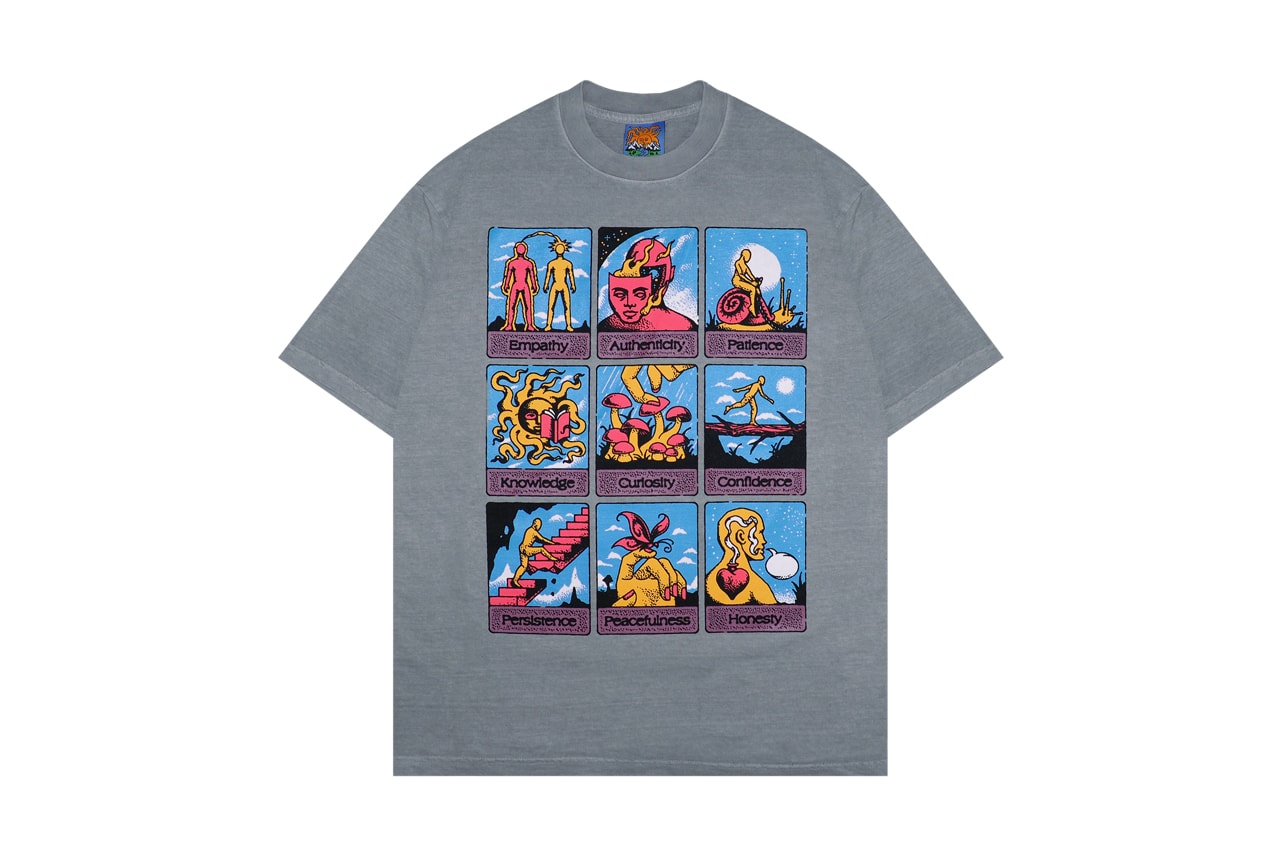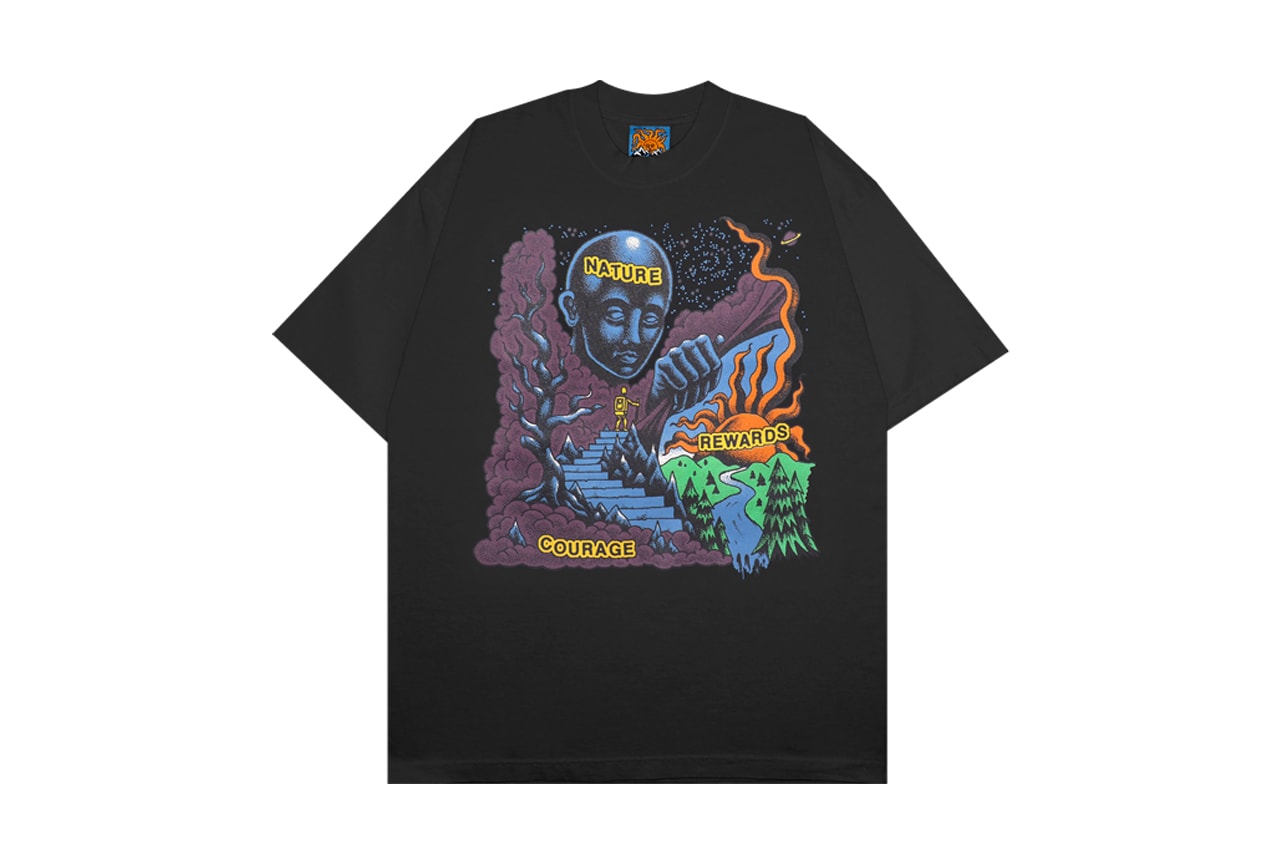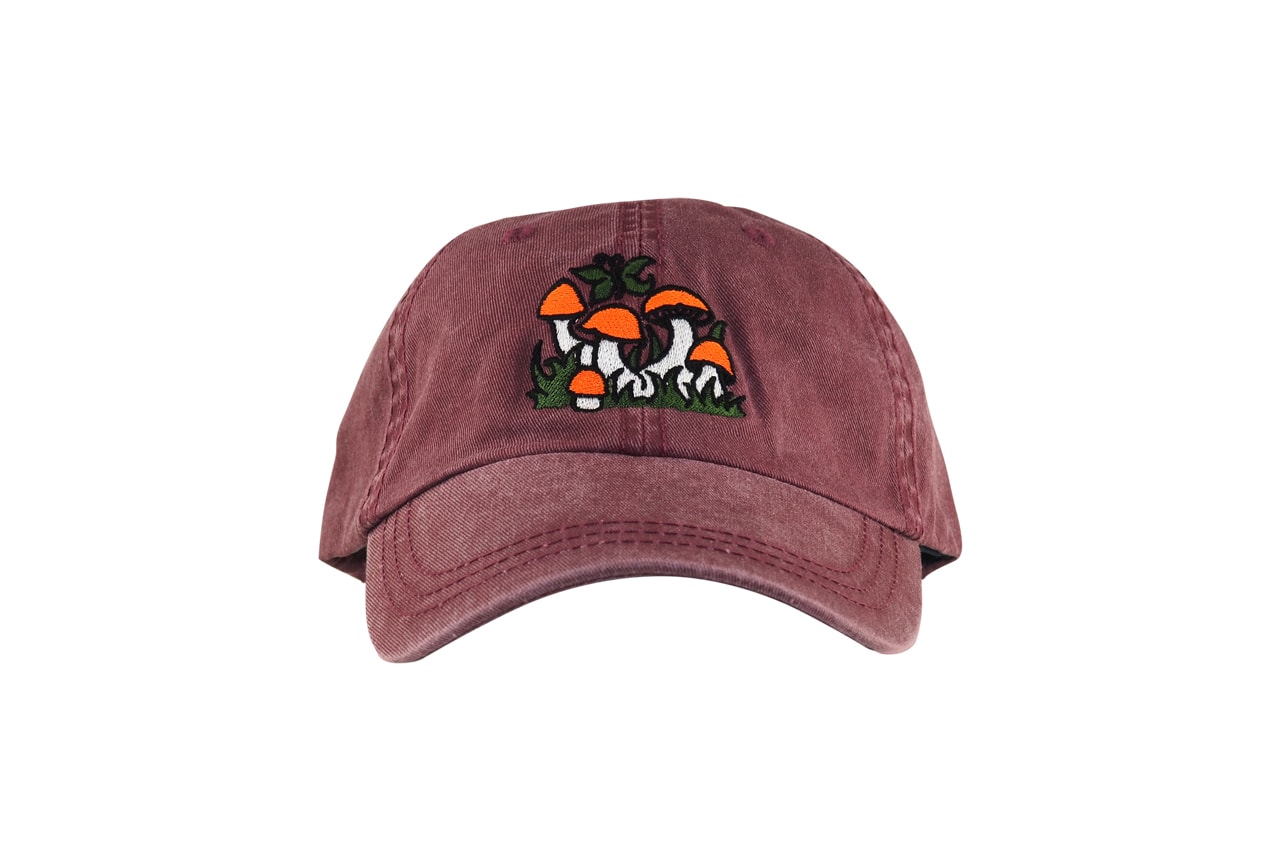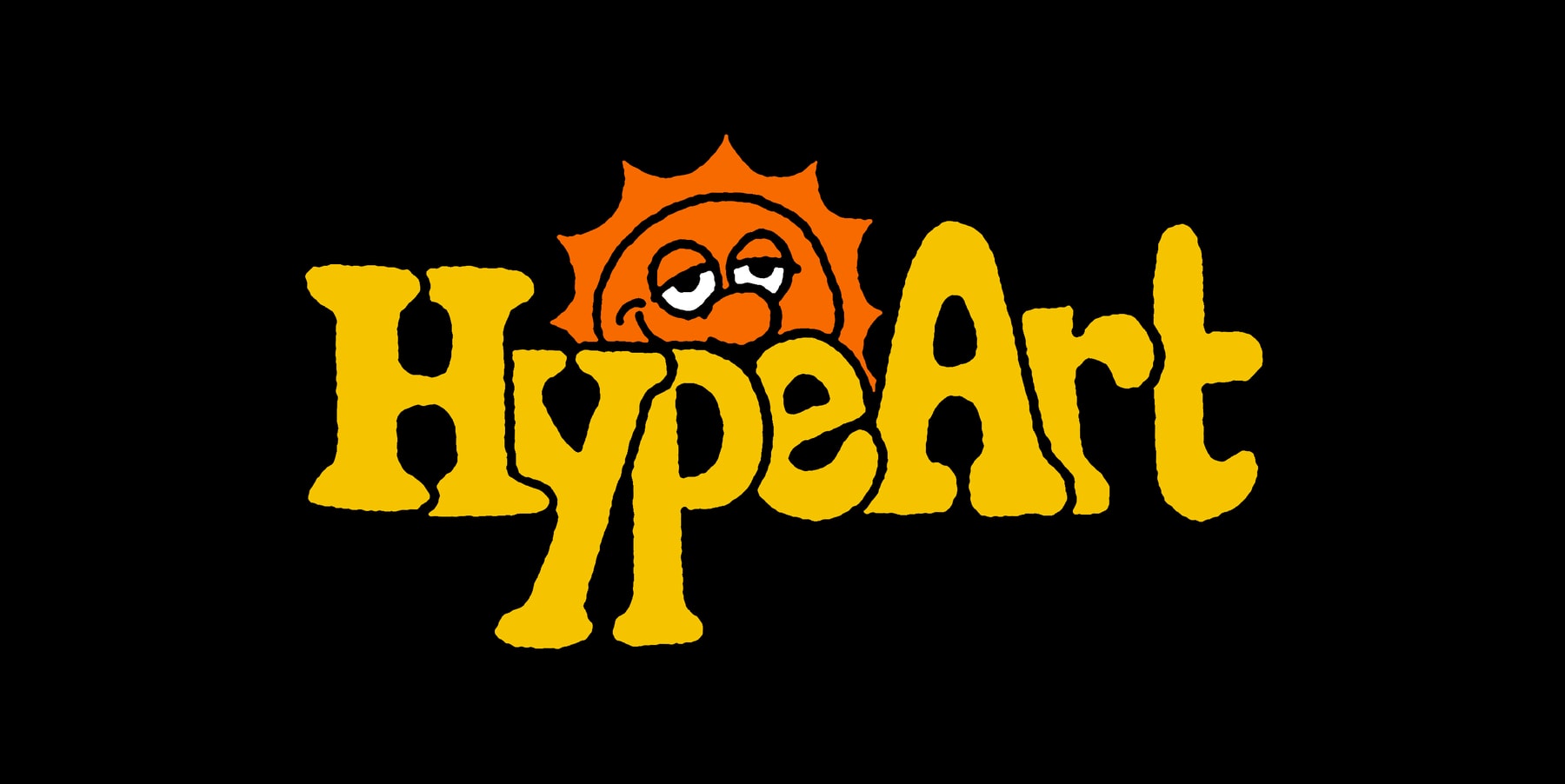

We’ve all heard the expression: glass half empty, glass half full. For those who need a better visual, Jake Foreman is there to illustrate the point.
Based in Adelaide, the Australian tattoo artist, illustrator and designer has built a cult following on Instagram for his cheerful work that can be equated to text-based hymns that met the anxious adult needing a push in the right direction. Through vibrant colors, universally recognizable characters, along with stippled gradients and textures, Foreman creates surreal compositions that feel like a refreshing take on the often-stigmatized world of psychedelic art.
Over the years, Foreman has steadily perfected his craft by allowing himself to alternate between analog and digital means. For the latest installment of Pen & Paper, I caught up with the Australian artist to talk on the development of his practice. Read the full interview below.
“Whatever you work on will get a little bit better with the more time you put into it.”
Can you talk about your youth and the subcultures that shaped you as an adult?
When I was super young, I was into skateboarding and I think that coming across some of the graphics used throughout skate merch put a huge spin on the way I saw art — in the sense that my motivation to create switched from drawing something from observation, to something made up that can tell a story, or create ‘branding’.
I think graffiti as a teenager was the main thing that pulled me into creating art more seriously. It was the first time I was motivated to create art regularly, and learning the life lesson that whatever you work on will get a little bit better with the more time you put into it. It was also a real eye opener to then meet friends and other people also doing graffiti and connect on a level of creativity. All of my closest friends are still from this era of my life — although we have all moved on to other creative pursuits, or in some cases completely different directions.
I’m not really sure if this still counts as youth, but the other big influence has been graphic design. I studied and practiced as a graphic designer for about eight years before pursuing my career as an illustrator. The fundamentals I learnt from the people I worked with still shape my work today.
Was art always a practice early on?
Art has always been a practice from a really young age. My grandma is an artist, so I would spend time with her drawing Knights and castles, or using her oil pastels. Throughout school this developed into drawing titles and characters on posters and other school projects.
Which artists or movements in particular inspired you?
This constantly changes over the years, but at the moment, I like illustration from the ’60s-90s-ish, that uses bold black and/or flat color — I guess from the time before digital printing really kicked off. Alexander Stitt that did the ‘Life. Be in it’ campaign in the ’80s here in Australia is a big inspiration. Michael Smollin, illustrated a lot of Sesame Street books I read as a kid and definitely influenced my taste somewhere subconsciously. I also look at a lot of Robert Crumb’s work for reference to his hatching style shading. Dr. Seuss is another big favorite.
Also your classic illustrators from the Psychedelia era — Peter Max, Milton Glaser, John Alcorn. In terms of movement, I think the counterculture magazine’s from this time are a great reference; The San Francisco Oracle, Whole Earth Catalog, Gandalf’s Garden.
“Almost every tattoo you make, you end up in a flow state which can be quite satisfying.”
Would you describe yourself as a tattoo artist first or illustrator?
When I left my full time job as a graphic designer, I didn’t really have one goal, it was more to work for myself. So I was juggling freelance graphic design, illustration and tattooing to get by. There was a point where I really thought tattooing was it for me, but now some time has past I feel like I was just kind of rebelling against some of the frustrations I had being employed as a graphic designer. I think illustrator is a more organic term for me — I was never motivated to tattoo by a love for tattooing itself — more for the love of drawing and creating.
How would you say the two differ?
In my opinion, tattooing has a lot more practical parameters. It needs solid lines and heavy black to age well. You can’t really just do whatever you like as a tattoo, it cant be too traumatic to the skin or un-economic. But there is a sense of freedom (when you get over the initial anxiety of marking someone for life) from working purely in the moment. You cant really undo, erase or start over with a tattoo. So almost every tattoo you make, you end up in a flow state which can be quite satisfying.
Illustration is a lot more ‘planned’ and ‘designed’ — you tend to go through a bunch more experiments trying to find the best solution for how you’d like the work to look. It’s also about communicating some kind of message or idea, where as tattoos are at the end of the day decorations for skin. I think I enjoy the conceptual nature of illustration a lot more.
It’s got to be something special to see clients have one of your designs tattooed on them for life. Can you remember the most special artwork you’ve inked?
It’s really cool, and its also cool attracting people that have quite common interests to you to come and get tattooed and have some great conversations. I wouldn’t say theres a particular most special, but its always a big deal when someone gets a really large piece from you, like a big torso or sleeve or something.
“I am trying to communicate a simple, fundamental idea, based on quite complex piece of philosophy.”
Stippling seems to be a key element in both your work as an illustrator and tattoo artist. Walk us through how you typically create a mark, from early concept to final execution.
I wouldn’t like to box it in as stippling only. I think the thing that I find fundamental to my work is having solid black and color — referencing classic printing techniques. This is probably why I seem to end up being commissioned for apparel and posters a lot of the time. At the moment I am making more works that use line details and hatching, and also experimenting combing that with stippling. Most of my work up until now has been a process of shading using an airbrush style smooth brush, where I then apply texture processing in photoshop to give it whatever scale or style of texture I need.
Depending on what I’m working on, most pieces will start as loose notes in my phone. From there I will explore layouts in adobe illustrator, mostly to resolve where the type will be placed. Then I start sketching out the lines of the piece. I swap over to draw in ProCreate on the iPad for this, Ive found its the fastest line drawing option for me so far. Once I am happy with the sketch I will do a final outline pass, fill with colour, and then work out how the black will come in to help separate each element further. Then I swap over to do a final texture pass in Adobe Photoshop.
Storytelling is also vital to your work. There always seems to be an uplifting message, where you try to heal through your art. How would you describe your work in your own words?
I think from working for a while in a commercial setting, I always feel like the work has to be communicating some kind of idea or philosophy. For me finding the right thing to say with my work has been a journey, but it has only come from exploring interests outside of art all together. I am really into learning about eastern philosophy, particularly from figures that bought eastern philosophy to the west (Allan Watts, Swami Satchidananda, Ram Dass).
When I create a piece of work, I am trying to communicate a simple, fundamental idea, based on a quite complex piece of philosophy in the most visually interesting way I can. I think it’s near impossible for a two dimensional graphic to heal, but it can create a small spark of enquiry to find a sense of what is really behind our experience in the world. As I go on, I’m learning that it doesn’t even need to be as sophisticated as communicating philosophical ideas to connect with that spark — it can be literally a message about walking, or being outdoors (other big pastimes of mine outside of work). Exploring things more relatable to larger audience can be more impactful. Most importantly, and probably the primary motivator, is that I find making the work helps me think and understand what the concept I am exploring is, for myself, at that particular time.
“Psychedelics seem like a natural fit.”
Is your work premeditated or does it usually begin through an unconscious flow?
It’s always premeditated to some extent.
Psychedelia, in terms of the canon of pop culture, has historically had a bad reputation — denoting to drug culture and general ineptitude. However, as mentioned earlier, healing and transcendence seems to always be a core message. Why do you think this is changing for the better?
As we progress as a civilization and we find ourselves with more time to contemplate our existence, psychedelics seem like a natural fit to explore this. They were pushed down for a while, but as the yearn gets stronger, they are coming back up for enquiry again. I’m sure the cycle will also repeat for the years to come.
Do you paint as well and can we expect a gallery exhibition in the near future?
I’ve experimented with painting throughout the years but not recently. I think as I develop a method to work that pairs better creating psychical pieces by hand, I would like to explore this further.
What is a medium that you aim to explore next?
I would love to experiment more with 3D modeling or collaborating with someone in that realm. Separate to that, although it’s not necessarily a medium, I would like to explore art direction, and commission other artists/illustrators to create a visual for an idea or direction I have.
